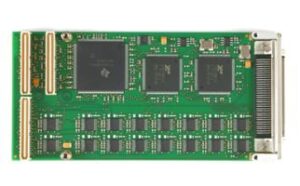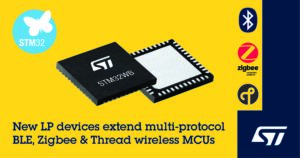Bits are the 1s and 0s that form the basis of digital information. A group of 8 bits is a byte and forms the basis of digital computing. Bits and bytes are used for storing and processing information as well as other functions in a digital IC. This FAQ begins with a brief review of […]
32-bit
32-bit MCUs achieve CAVP certification for Comprehensive Suite of Cryptographic Algorithms
Renesas Electronics Corporation announced that the security engine of its RA Family of 32-bit Arm Cortex-M microcontrollers (MCUs) has been certified by the National Institute of Standards and Technology (NIST) Cryptographic Algorithm Verification Program (CAVP). The drivers to utilize the certified SCE9 Protected Mode are included in the RA Family Flexible Software Package (FSP) v3.6.0 […]
8-, 16- and 32-bit MCUs…are more bits better?
Are more bits better in an MCU? That’s similar to asking: are more cylinders better in an internal combustion engine (ICE)? Peripherals and other features matter, not just bits (or cylinders). For example, in the 1980s, Volvo offered a station wagon with a turbo-V4 engine that was faster off the line than Chevrolet Corvette with […]
XMC modules work on PCIe mainboards thanks to PCIe Gen3 redriver
The SPR518 PCI Express XMC carrier card provides an innovative upgrade path to protect customers from obsolescence. The SPR518 provides an upgrade path for customers by offering a replacement for the existing SPR418A. This card is a short form factor PCI Express (PCIe) carrier for XMC modules which allows for use with traditional PCs. The […]
PMC serial controller sports 16 ports
The PMC523 is a 16-port serial controller that provides an innovative upgrade path against from obsolescence. The PMC523 is a flexible solution and a technology insertion which integrates multiple serial I/O channels onto single board computers (SBCs) with PCI Mezzanine Card (PMC) sites. Its efficient design packages 16 serial channels onto a single PMC. Additionally, […]
Toolbox enables Simulink, MATLAB model execution on embedded processors
Green Hills Software, announced today the immediate availability of the MULTI Toolbox for Embedded Coder, enabling engineers to easily and efficiently develop and deploy their Simulink and MATLAB models on a wide range of embedded processors. The integration bridges advanced software development products from industry leaders in their respective domains – MathWorks, the leading developer […]
Development tools for TraveoTM II MCUs optimized for auto-body electronics apps
IAR Systems, presents a complete set of development tools for the TraveoTM II family of microcontrollers (MCUs) from Infineon, bringing a powerful solution with AUTOSAR support to companies working with automotive body electronics applications. In addition, IAR Systems provides an online IAR Academy On Demand training course specifically aimed for developers who are new to […]
Debug interface hardware now available for Linux on ARM
SEGGER’s entire portfolio of J-Link software is now available for Linux on ARM, for both 32-bit and 64-bit platforms. This includes both the command-line programs and GUI tools such as J-Flash, J-Flash SPI, J-Scope, the J-Link Configurator, and the GUI version of the GDB Server. J-Link for Linux on ARM supports the same target devices […]
MCUs target IoT apps, consume uA/MHz in active mode, 1.6 mA in standby mode
Renesas Electronics Corporation expanded its RA4 Series microcontrollers (MCUs) with the new 32-bit RA4M3 Group of MCUs. The RA4M3 MCUs boost operating performance up to 100 MHz using the Arm Cortex-M33 core based on Armv8-M architecture. Featuring industry-leading performance, Arm TrustZone technology, Renesas’ Secure Crypto Engine, and a suite of new memory enhancements, the RA4M3 Group […]
Dual-core multi-protocol MCUs boost Bluetooth LE 5.0, Zigbee 3.0, Thread connectivity
STMicroelectronics has expanded the STM32WB portfolio of dual-core multi-protocol microcontrollers (MCUs) by introducing the STM32WB35 and STM32WB30 Value Line, giving designers more flexibility to target cost-conscious market opportunities. The extremely low-power MCUs integrate a 2.4GHz radio managed by a dedicated Arm Cortex-M0+ core, with a 64MHz Arm Cortex-M4 for the main application, to permit uninterrupted real-time performance. They support Bluetooth […]









